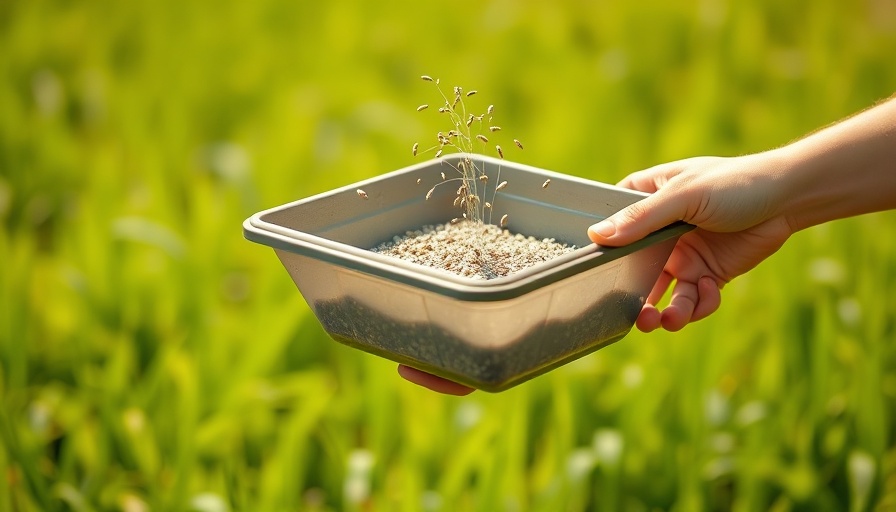
Revitalize Your Lawn with Effective Overseeding Techniques
Overseeing a lawn is a straightforward yet crucial process to enhance its health and appearance. Whether your lawn is suffering from patchy growth or simply needs a lush update, overseeding offers an effective solution. With the right approach, you can transform your thin, dull grass into a vibrant and lush carpet that invites you to relax outdoors.
Understanding the Importance of Overseeding
Overseeding not only fills in bare spots but also helps choke out weeds, making your lawn denser and healthier. According to gardening expert Megan Hughes, identifying the reason behind a thin lawn is crucial. Common culprits include poor soil drainage, excessive foot traffic, and inappropriate mowing techniques. Taking time to address these underlying issues before overseeding can lead to long-term success.
Timing Your Overseeding
The timing of your overseeding is vital for optimum results. For cool-season grasses like Kentucky bluegrass, the late summer to early fall is ideal, as cooler temperatures and regular rainfall aid germination. If you miss this window, spring is your next best opportunity. Meanwhile, warm-season grasses thrive when overseeded in the early spring.
Preparation is Key
Before adding new seed, it’s essential to prepare the existing lawn. Mowing it shorter (1.5 to 2 inches) and raking away grass clippings and debris helps establish good seed-to-soil contact. Furthermore, consider aerating the soil to improve water penetration and nutrient access. This can be achieved using a core aerator, which removes small plugs of soil and creates a better environment for new grass seed.
The Right Tools and Materials
For overseeding, you'll need a few basic tools: a lawn mower, rake, and grass seed or a seed spreader. When selecting grass seed, choose a variety that suits your climate and addresses the specific conditions of your lawn, such as sun exposure or shade tolerance. Local garden centers often carry seed mixes tailored for different environments, making the process easier.
Implementing Your Overseeding Strategy
Once your lawn is prepared and the right time has come, spread the seed either by hand for small areas or using a seed spreader for larger ones. Afterward, give the newly seeded area some tender care with regular watering and a suitable fertilizer designed for new lawns. Keeping the soil moist until the grass germinates is one of the most critical steps in ensuring a successful overseed.
In summary, overseeding is a simple yet impactful undertaking to rejuvenate your lawn. By carefully preparing your existing grass, timing your seeding appropriately, and choosing the right products, you can achieve the lush, beautiful lawn you've always wanted. Don’t wait for bare spots and weeds to take over; take action now!
 Add Row
Add Row  Add
Add 




 Add Row
Add Row  Add
Add 

Write A Comment